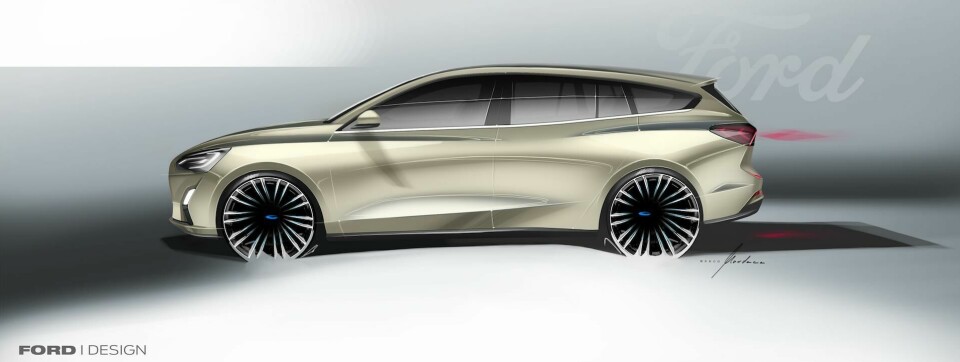
Joel Piaskowski on the new Ford Focus
Ford’s man in charge of cars and crossovers explains the sharper Focus
Ford staged the western portion of its global Focus reveal in London last week, showing the hatchback and estate. At the same time, it unveiled the sedan in a separate event in its Chinese factory in Chongqing. We caught up with Joel Piaskowski, Ford’s head of car and crossover design globally, at the London event, to ask him how he went about designing what’s still a key model for Ford.
It was a significant event in another way too: this was Piaskowski’s first major launch after being promoted to his new role last August from his previous position as head of design for Ford of Europe.

The new Focus debuts a new front-wheel unibody architecture that’ll underpin everything from the next Fiesta to bigger crossovers. How does it inform the design of the Focus?
There’s a lot of flexibility with the architecture and we really tried to get this more premium look to the new Focus. It shifts the A-pillar rearwards and gets the cabin sitting really tight on its wheels. That creates the strength of the sculpture of the haunches of the front and rear wheels.
It looks planted at the rear…
There we’ve pushed the greenhouse inward to give the strong haunches, which gives it a more assertive stance on the road, to look almost rear-wheel drive. It’s one of those classic proportions that people appreciate even though they can’t articulate it.

You’ve said that removing the rear quarter light makes the new Focus look more premium. How so?
It means the DLO shape is more contained. It creates a more individualistic cabin, and you get that strength in the body-coloured C-pillar planted on top of the rear wheel.
Amko [Leenarts, Ford’s European head of design] said you’d got rid of the front quarter light too…
What we did is take the A-pillar and move the base rearward to create a longer-looking bonnet; it helps to visually stretch the proportions of the front end, it puts the A-pillar behind the centreline of the front wheel. The current one is stretched much further forward. It’s almost a monovolume profile, but with this one we’re getting quite a distinctive two-box profile.

You must have been involved in the discussions to create this new architecture.
From a design standpoint, you have to start with the architecture. That’s the bones that make up the composition of the vehicle. If you don’t get the architecture right, you’re putting lipstick on it. But if you have that inherent architecture it makes the design work so much easier.
The sedan will be sold in China and the US. What were the unique challenges creating the sedan?
If you add too many wedge lines that angle down toward the front on the bodyside it really raises the rear of the vehicle on the sedan and estate. The hatch is quite truncated, with a very short rear overhang, so you can get away with a lot of wedge or attitude to the bodyside. But when you design all three together, you have to realise how far you have to settle the rear of the car down to make it work across the three body styles.

How did you overcome that?
The lower line rises but not nearly as much as the current Focus. That one is really quite high in the rear. Here the haunch lines are much more stable, more horizontal. It has a little bit of wedge but it’s not radical, it’s not uncomfortable.
What was the thinking behind stretching out the Focus lettering on the tailgate?
It’s just celebrates the name – right there, proudly below the oval.

What inspired the elongation?
It’s just intuitive design work on our part. We’ve got this long area, so let’s space out the letters so it has a bit of breathing room in between. The elongation helps stretch your eyes out wider to increase the feeling of width, increase the feeling that it has a strong, more stable stance on the road.
What does your new role as global head of crossovers and cars involve?
I’m now responsible for anything with the front-wheel-drive unibody architecture. I have oversight of the studios’ work on those types of vehicles in Europe or Asia-Pacific – and there’s another one of me, Chris Svensson, who has responsibility for body-on-frame trucks and SUVs. We’re together under Moray Callum.

What was the thinking behind splitting the two roles between truck and car?
Part of it was to consolidate the two leadership roles in North America, in Dearborn, and have more direct access to senior leadership. It was about dividing and conquering the workload; having a focus on a just couple of types of vehicles, versus a full range. It was about getting some consistency in the design DNA for cars and crossovers, as well as trucks and SUVs.
Is there someone responsible for electric cars?
Currently we’re working on an electric car that has been announced [Mach 1 SUV, due in 2020] and that falls under my responsibility.



